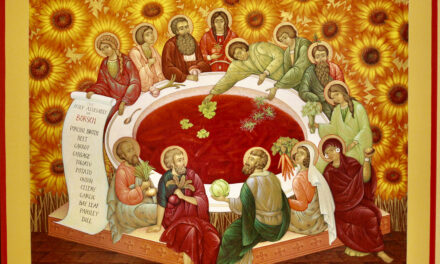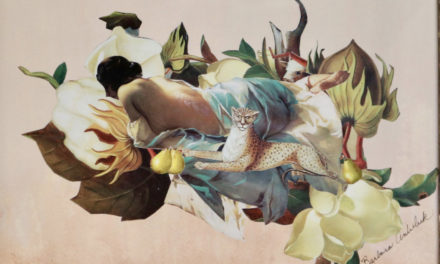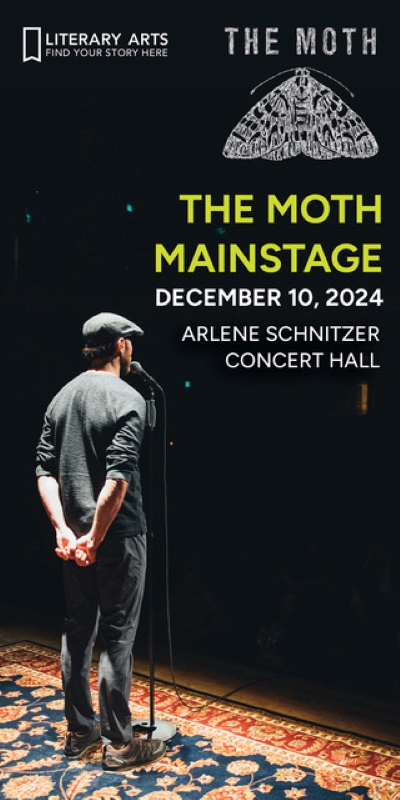(Many of the late artist David McCosh’s paintings are abstractions of landscapes he experienced in the Eugene area. Above is “Fall Creek,” painted in 1964.)
By Randi Bjornstad
Artist David McCosh arrived in Eugene to teach at the University of Oregon in 1934, when he was just 31 years old, and spent rest of his career there. He retired from the faculty in the 1970s and died in 1981.

Both gallery owner Karin Clarke’s parents — Margaret Coe and the late Mark Clarke — were students of McCosh
His life span included the horrors of war — World Wars I and II, Korea and Vietnam — as well as vast changes in society and technology, but while “many painters who were active during these years changed with the times, McCosh did not,” according to art aficionado and collector Roger Saydack, who has curated an exhibit of McCosh’s work at the Karin Clarke Gallery in Eugene.
Not only were society and culture changing dramatically during McCosh’s life, but so was painting, Saydack wrote in an introduction to the show, moving during the decades from modernism to social realism, on to expressionism and surrealism, followed by abstract expressionism, minimalism and pop art.

“Farmhouse on Millrace” is one of David McCosh’s early realism paintings
However, “The purpose of his painting remained constant during all the turmoil going on around him,” Saydack said in his essay about McCosh, because for him, “Painting was about learning how to see what was distinct and special about his subject.”
In the earlier part of his career, McCosh concentrated on portraying the unique character of his subjects with a greater emphasis on realism, but by the 1940s, “His paintings became demonstrations of his process of observation,” Saydack said. “How he saw was their point, not just what he saw.”
That conclusion led to the title of the new exhibit, “Learning to Paint is Learning to See,” an admonition McCosh reportedly told all his students, gallery owner Clarke said. The meaning becomes clear in the selections Saydack chose to include in the show, beginning with a 1934 oil painting called “Farmhouse on Millrace” that shows a realistic landscape of a bucolic farm in spring, two horses frolicking in a pasture in the foreground.

By the 1960s, when McCosh did this watercolor and gouache, “Color in Spain,” his work had become far more abstract
By the 1940s, McCosh’s work was softening in detail, until by the 1960s he began to express his views of nature with abstract patterns of color and shadow standing in for the stricter elements — trees, water, sky or buildings — of their reality.
Decades later, McCosh’s reputation as both an artist and a teacher and his appeal to art lovers has not diminished.
The day after the new gallery show opened, Kevin J. Brown, a Eugene area real estate broker, stopped in with great enthusiasm to see the work of one of his favorite artists.

The exhibit includes several of McCosh’s sepia-toned works, including “The Last Leaf”
“With many of McCosh’s paintings, you don’t see the whole picture — you use your imagination — but you still know see that his work was deeply grounded in Lane County and the Pacific Northwest,” Brown said. “When I look at his work, I see something new every time.”
After circling the gallery to see the walls full of McCosh’s work on display, “There are at least four paintings here that I would love to have,” he confessed. “To me, appreciating art is more important than food and beverage.”
A few minutes later, Eugene artist Mike Van also stopped by to see the McCosh show.
“I studied with him in the 1950s — he was a great artist and a really nice guy,” Van said as he moved from frame to frame of McCosh’s work. “Back then, the University of Oregon had only about 5,600 students,” he mused, “but for art, it was a good place to be.”
There still are many artists in the area who either knew McCosh or studied with him, Clarke said. Both her parents, Margaret Coe and the late Mark Clarke, were students of McCosh.
“There are many artists whose work you look at and immediately can tell they were his students,” she said. “He had a huge influence on art in the Pacific Northwest.”
Learning to Paint is Learning to See
What: A retrospective of work by longtime Eugene artist David McCosh
When: Through March 31
Where: Karin Clarke Gallery, 760 Willamette St. in downtown Eugene
Gallery hours: Noon to 5:30 p.m. Wednesday through Saturday
Information: 541-684-7963 or karinclarkegallery.com










